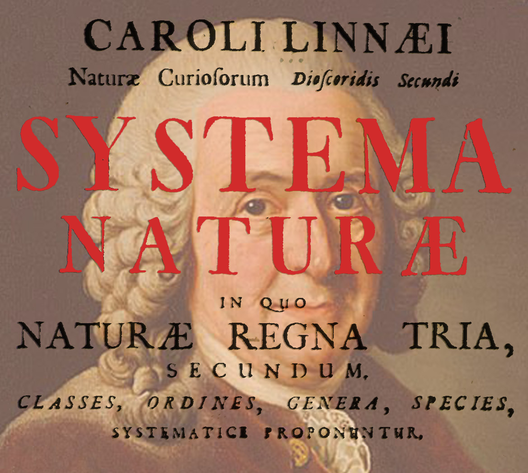Carolus Linnaeus1707–1778
In 1735 Carl von Linné, better known as Carolus Linnaeus, published the first brief version of his Systema Naturæ in the Netherlands. He is shown on the left in the title page of this first edition, and on the right in the second. It expanded from 11 pages in the first edition to 3000 pages by the thirteenth, published in 1770. Linnaeus presented a hierarchical classification of plants and animals in terms of kingdoms, classes, orders, genera and species. The success of the taxonomy he proposed has tended to obscure his work in other areas. For example, Linnaeus added to our knowledge of the chemical senses. Since antiquity, lists of sensory qualities have been compiled and this applied particularly to senses, like taste and smell, for which there was little agreement on what the qualities were. Aristotle had listed seven dimensions of taste: sweet, bitter, sour, salty, astringent, pungent, and harsh. Linnaeus’s list was very similar and he considered that tastes could be sweet, acid, bitter, saline, astringent, sharp, viscous, fatty, insipid, aqueous and nauseous. However, Linnaeus’s categories for smell were much more novel: the primary odours were aromatic, fragrant, ambrosiac (musky), alliaceous (garlic), hircine (goaty), foul and nauseous. He was educated at Uppsala University and, after travels in Europe, returned to become professor of botany.
